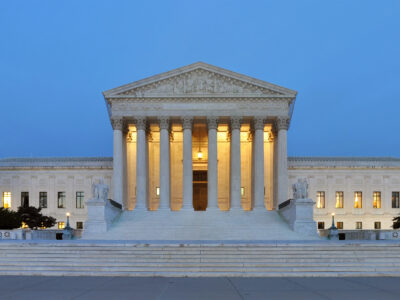Sidestepping Regulatory Ossification
The regulatory process can take forever. Here are some possible responses.
Some years ago, Tom McGarity coined the phrase “regulatory ossification” to describe the increasingly slow and cumbersome regulatory system. Since then, the situation has only gotten worse. As a recent article by Bethany Davis Noll and Richard Revesz points out, significant regulations take an average of four years to issue, and judicial review adds another year. Admittedly, when deregulatory actions are undertaken by a Donald Trump, this ossification may seem a benefit. But it provides a daunting prospect for a new President, anxious to take action on an issue like climate change. A single-term President will have difficulty bringing a regulation all the way to final approval, leaving it at the mercy of the successor.
Noll and Revesz discuss the possibility of getting a head start before a new President takes office. Although it would be a considerable investment of time and effort, much work could be done before the election even takes place. It would be worthwhile for foundations to fund as much analytic spadework as possible. State governments should also be conscious that work they do on designing and assessing regulations may pave the way for speedier national action.
It might be worthwhile in designing regulations to consider proceeding in stages. For instance, rather than waiting until all of the details of the Clean Power Plan were in place before issuing it, the agency might instead of issued a framework regulation setting the basic parameters for the effort, allowing that regulation to work its way through the courts while proceeding began to work out the state-by-state details. In the case of the Clean Power Plan, the framework regulation could have set out the basic strategy of focusing on state plans reducing reliance on fossil fuels. Once that strategy was established, it would be harder for a new Administration to simply switch to an entirely different legal theory. Admittedly, it would be harder to do a very detailed cost-benefit analysis of such a framework regulation, but that may be a feature rather than a bug if the goal is to speed up the process. This kind of tiering is used for environmental impact statements all the time, and there’s no reason it couldn’t be used for regulations.
Even apart from the ossification issue, another problem is that the Supreme Court is not likely to be sympathetic to bold regulatory initiatives over the next few years. Here, the answer may be in part to avoid the Court’s attention by undertaking more numerous but smaller regulatory efforts, rather than big omnibus regulations that are likely to catch the Court’s eye. It also seems likely to be more productive to shift effort away from bold legal theories and devote more attention to developing a factual record to support stronger action under accepted legal approaches, since courts are less likely to interfere with technical judgments. For instance, tightening the national air quality standards would have the effect of reducing both conventional air pollution and carbon emissions.
Another option is for the agency to shift some of its attention to non-regulatory methods. In particular, if Congress is willing to provide the funding, there is a great deal to be said for ramping up enforcement of existing regulations. Moreover, the agency could devote more attention to permit proceedings and be more aggressive in its demands on polluters seeking permits. For instance, the Supreme Court has upheld a requirement that major new sources take climate impacts into account, and EPA could apply the standards for these sources more rigorously. Voluntary programs and publicizing bad behavior may also be lower cost ways of obtaining results that have the side-benefit of avoiding cumbersome procedures and judicial review.
There is also the possibility of direct Presidential action. I have blogged before about the possible legal leverage that might flow from declaring climate change to be a national emergency or threat to national security. I wonder whether carbon emissions could be made a factor in federal contracting. Doing so would reach a large number of companies. Trump, like his predecessors, has also made use of executive orders simply to publicize a stance and commit agencies to following through. This may reduce the amount of infighting along the way to issuing a regulation.
Non-administrative efforts should also be considered. As Noll and Revesz point out, the GOP set a precedent for energetic use of the Congressional Review Act to kill Obama Administration regulations in 2017. If the Democrats get control of Congress, they should use the Act to nullify any Trump deregulatory actions that are finalized without six months of the election. That’s roughly the time period where the Act applies. Although I’m not a fan of that statute, for reasons explained in a recent paper, what’s sauce for the goose is sauce for the gander.
And then, of course, there’s legislation. Congress seems to have very limited bandwidth, so it may be best to rely on Congress mostly for funding and for the use of the Congressional Review Act, which has a streamlined procedure. But at some point, we are going to need new legislation on the climate issue, and there’s no reason why we shouldn’t start working toward that end.
We’re still over a year away from election day, even though it already feels like the campaign has been going on forever. Who knows how things will turn out in November 2020? But the stakes are high enough so that it’s worth doing some contingency planning, even if that planning ultimately doesn’t come to fruition.
Reader Comments
One Reply to “Sidestepping Regulatory Ossification”
Comments are closed.






These ideas are near and dear to my heart. With the blessing of a democratic administration come 2020, I would hope to see a well-prepared squad ready to undo all the idiot reg. rollbacks Trump (aka Stephen Milller) have been foisting on us.
Howard Wilshire
howardgw@comcast.net